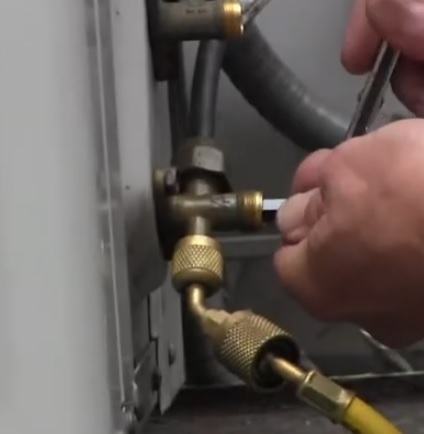
Pumping down an HVAC system is routinely done for many reasons, such as moving a unit, replacing the line-set, or general repairs.
The Pumping down of a unit should no be confused with vacuuming a unit down which are separate.
Some basic tools will be needed such as HVAC gauges, Allen key, and crescent wrench.
What Is Pumping Down an Mini Split System?
When an HVAC unit is pumped down, all the refrigerant is pulled into the outside condenser for storage.
Most all mini split systems come with the refrigerant stored in the outside condenser and released into the system after being vacuumed down.
Pumping down a unit is placing the unit back into its original state of storage.
Why Is a Mini Split Pumped Down?
A mini split is usually pumped down when being moved, or the line set is being worked on.
The refrigerant can be stored in the outside condenser, which is in the same state as when shipped from the manufacturer.
Having the refrigerant locked into the outside condenser makes it easy to relocate a unit and release the refrigerant after it has been moved and set up.
Tools Needed Pump Down a Mini Split HVAC System
- HVAC Gauges
- Allen Key
- Screwdriver
- Crescent Wrench
HVAC gauges will be needed to watch the pressure on the low side gauge.
An Allen key is also needed to shut off the high and low-pressure valves to lock the refrigerant inside.
A screwdriver will be needed to remove the cover and wrench to remove the caps protecting the valves.
Steps To Pump Down a Mini Split HVAC Unit
- Remove the cover on the outside condenser.
- Remove the service valve caps for the high and low pressure lines.
- Attach HVAC gauges to the Low side (Big Line) service valve.
- The Pressure on the Gauges Low side (Blue) will rise.
- Power On the Mini Split Unit and put it in Cooling Mode.
- Watch the HVAC Gauges Low Side (Blue) the pressure will begin to drop.
- Use an Allen Key to shut the High Pressure line off (Small Line).
- Watch the gauges for the pressure to drop to zero.
- Once the pressure drops to zero, use an Allen Key to shut the Low Pressure line off (Big-Line).
- The unit should now be pumped down with all the refrigerant in the outside condenser.
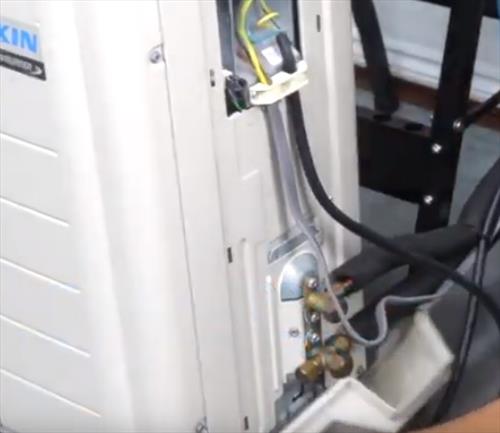
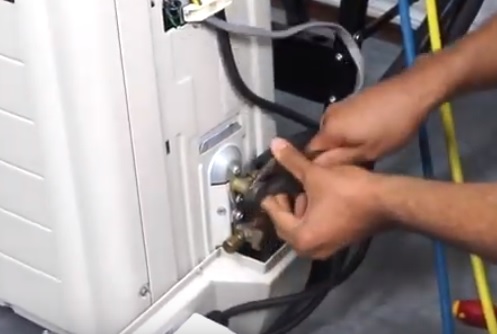
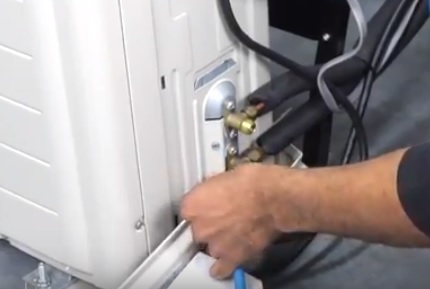
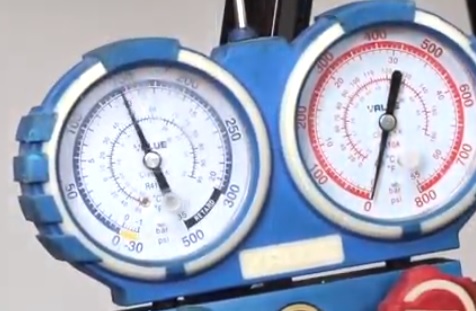
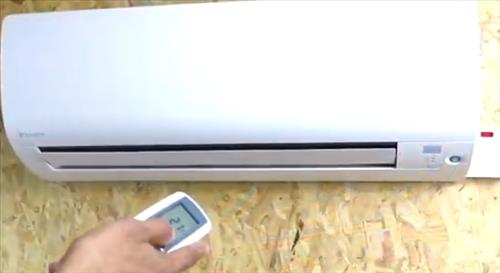
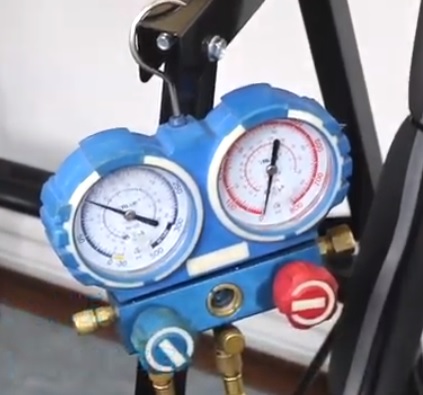
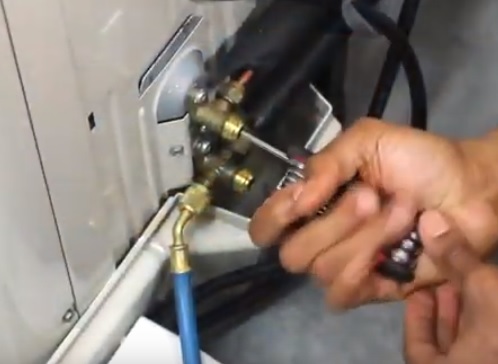
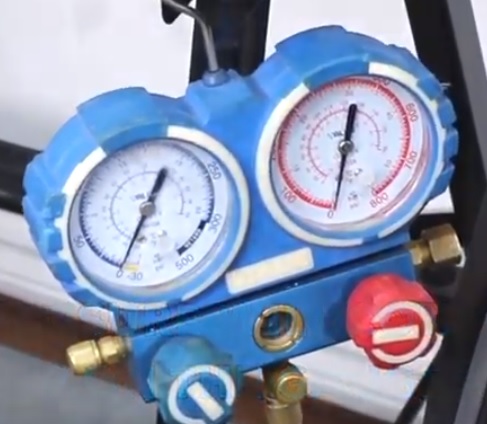
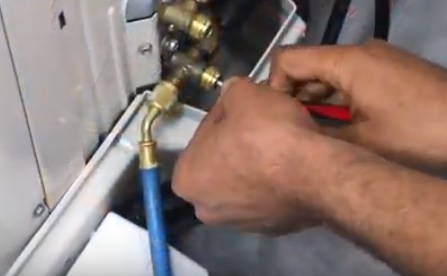
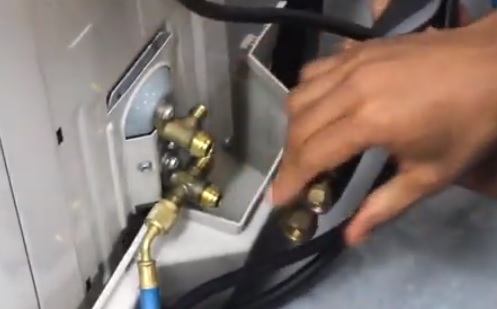
This can be done without a gauge set, run the unit in cooling mode for a few minutes and then screw the high side valve (small tube) all the way in. Keep running the unit for a few minutes and then screw the lowside valve all the way in. The outside unit now contains the refrigerant. And the inside unit and gas/liquid lines can be removed. I make no claims about proper procedures for doing this, but it is better to pump the unit down and contain as much refrigerant as possible than to disconnect the piping without pumping the system down at all
You cant, once you put the unit back, the lines and inside unit have to be vacuumed down to remove air and moisture, you need to call a tech before you ruin your unit(s)
Hi,
I have one question about outdoor unit CAREER can be replaced by GREE out door unit, wiring can match for both. Pls advice
Thank you
They will need to match.
Hi, Is the compressor able to draw a full vacuum on the line set and evaporator? If not, what percentage of refrigerant is recovered using this technique?
You need an HVAC tech to vacuum down the system. Upon repairs they can recharge the system.
Do you have to pump down – or can it run without doing that
I just read : “Steps To Pump Down a Mini Split HVAC System”
Step 5 indicates:
5. Power On the Mini Split Unit and put it in Cooling Mode.
My interior Mini-Split unit is defective and cannot be put in “Cooling Mode”.
What are the steps that should be followed in this situation ?
Same here.
I found this on another site: “unscrew the copper pipe which connects the inside and outside units. Put a bucket or tray underneath each side in order to catch spills from the refrigerant or “bleed” the system before removing.
Then, unscrew the inside unit from the wall, and place on a table with newspaper or something similar. Remove any wires or parts that might be needed, and leave it to empty itself of refrigerant.”
Doesn’t sound environment friendly but beats trying to find HVAC gauges I guess…I’ll probably try this.